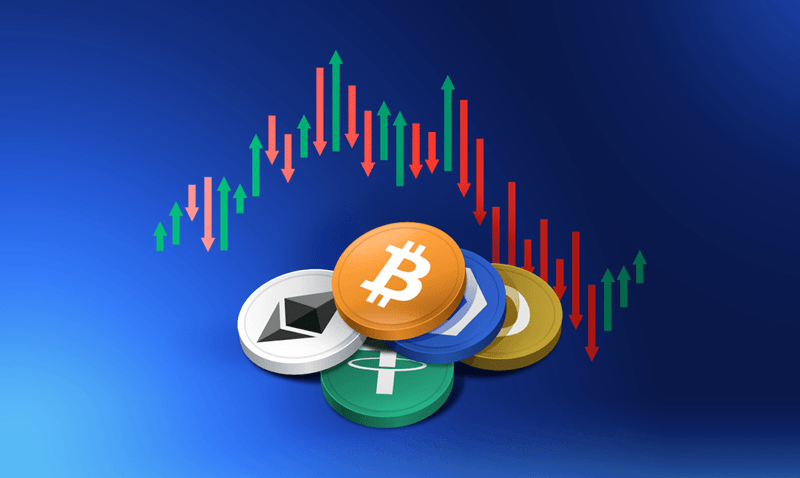Introduction
The relationship between traditional financial markets and the cryptocurrency market is a topic of increasing interest for investors, analysts, and economists. Understanding this correlation can provide valuable insights into market behavior, investment strategies, and economic forecasting. This article delves into the correlation between these two markets, analyzing historical trends, key events, and current data to shed light on their interdependence.
Understanding Market Correlation
Market correlation refers to the degree to which two markets move in relation to each other. A positive correlation indicates that the markets tend to move in the same direction, while a negative correlation means they move in opposite directions. Correlation is typically measured using statistical metrics such as the correlation coefficient, which ranges from -1 (perfect negative correlation) to +1 (perfect positive correlation).
Traditional Markets Explained
Traditional financial markets encompass various asset classes, including:
- Stocks: Shares of ownership in public companies.
- Bonds: Debt securities issued by governments or corporations.
- Commodities: Physical goods like gold, oil, and agricultural products.
- Forex: The foreign exchange market where currencies are traded.
These markets are influenced by a myriad of factors, including economic data, corporate earnings, interest rates, and geopolitical events.
Cryptocurrency Markets Explained
Cryptocurrency markets are relatively new compared to traditional markets. They include:
- Bitcoin (BTC): The first and most well-known cryptocurrency.
- Altcoins: Other cryptocurrencies, such as Ethereum (ETH), Ripple (XRP), and Litecoin (LTC).
- Blockchain Technology: The underlying technology for cryptocurrencies, enabling decentralized and secure transactions.
Cryptocurrency markets are highly volatile and influenced by technological developments, regulatory news, and market sentiment.
Historical Correlation Trends
In the early years of cryptocurrency (2009-2015), there was minimal correlation between traditional markets and cryptocurrencies. Bitcoin and other early altcoins were primarily driven by niche investor interest and technological innovation rather than broader economic factors.
Market Correlation During Key Events
- The 2017 Cryptocurrency Boom: As Bitcoin surged to nearly $20,000, its correlation with traditional markets remained low, driven mostly by speculative investment.
- The 2018 Market Crash: The subsequent crash highlighted the volatility of the cryptocurrency market, with little impact on traditional markets.
- COVID-19 Pandemic: Initially, both markets experienced significant downturns in early 2020. However, as governments injected liquidity into the economy, both markets recovered strongly, showing a temporary increase in correlation.
Recent Trends in Market Correlation
From 2021 to 2023, the correlation between traditional markets and cryptocurrencies has seen fluctuations:
- Institutional Investment: Increased involvement of institutional investors in the crypto space has led to a higher correlation with traditional markets.
- Geopolitical Events: Events such as regulatory changes and geopolitical tensions have influenced both markets, sometimes in similar directions.
Data Analysis: Correlation Metrics
Analyzing the correlation between traditional markets and cryptocurrencies involves statistical methods such as:
- Pearson Correlation Coefficient: Measures linear correlation between two variables.
- Spearman’s Rank Correlation: Assesses the strength and direction of association between two ranked variables.
Using these metrics, various studies and data sets reveal that while there are periods of high correlation, cryptocurrencies often exhibit unique market behaviors.
Factors Influencing Correlation
Several factors can influence the correlation between traditional markets and cryptocurrencies:
- Market Sentiment: Investor behavior and sentiment can drive both markets in similar directions.
- Economic Policies: Central bank policies and government regulations impact market movements.
- Technological Advancements: Innovations in blockchain and cryptocurrency technology can cause market shifts.
Case Study: Bitcoin vs. S&P 500
Comparing Bitcoin with the S&P 500 provides insights into their correlation:
- Key Trends: During periods of economic uncertainty, both Bitcoin and the S&P 500 have shown increased correlation, as investors seek safe-haven assets or liquidate positions.
- Insights: Bitcoin’s role as “digital gold” is often highlighted during these times, although it remains more volatile than traditional assets.
Case Study: Altcoins vs. Nasdaq
Analyzing the correlation between altcoins and the Nasdaq index shows:
- Key Trends: Some altcoins, particularly those with strong technological foundations like Ethereum, exhibit higher correlation with technology stocks in the Nasdaq.
- Insights: This correlation underscores the tech-driven nature of these altcoins and their potential integration into broader technology ecosystems.
Expert Opinions on Market Correlation
Experts offer varied perspectives on market correlation:
- Financial Analysts: Emphasize the growing influence of institutional investment in driving correlation.
- Cryptocurrency Experts: Highlight the unique factors affecting cryptocurrency markets, such as regulatory news and technological developments.
- Summary of Viewpoints: While short-term correlations may increase, cryptocurrencies retain distinct characteristics that differentiate them from traditional markets.
Implications for Investors
For investors, understanding market correlation is crucial for:
- Diversification Strategies: Diversifying investments across uncorrelated assets can reduce risk.
- Risk Management: Monitoring correlation helps in adjusting portfolios to manage exposure.
- Investment Considerations: Both long-term and short-term investors need to consider how correlation affects their strategies.
Future Outlook of Market Correlation
Looking ahead, the correlation between traditional markets and cryptocurrencies may evolve based on:
- Current Trends: Continued institutional adoption and regulatory clarity could increase correlation.
- Potential Disruptors: Technological breakthroughs and significant policy changes could alter correlation patterns.
- Long-Term Implications: Both markets may increasingly reflect global economic conditions, but cryptocurrencies will likely retain unique market dynamics.
Conclusion
The correlation between traditional markets and cryptocurrency is a complex and evolving topic. While there are periods of high correlation, especially during major economic events, cryptocurrencies often exhibit independent behaviors driven by unique factors. For investors, understanding these correlations can aid in making informed decisions and managing risk effectively.
FAQs
- How does market correlation affect investment strategies?
- Market correlation impacts diversification and risk management strategies. Higher correlation means similar market movements, affecting portfolio balance.
- Can traditional markets predict cryptocurrency movements?
- While traditional markets can influence cryptocurrency movements, predicting exact behaviors is challenging due to unique factors affecting crypto.
- What are the risks of high correlation between markets?
- High correlation can lead to simultaneous losses across assets, increasing overall investment risk.
- How often do market correlations change?
- Correlations can change frequently, influenced by economic events, market sentiment, and regulatory developments.
- Where can I find reliable data on market correlation?
- Reliable data can be found on financial news websites, industry reports, academic studies, and through financial analytics platforms like Bloomberg and TradingView.



